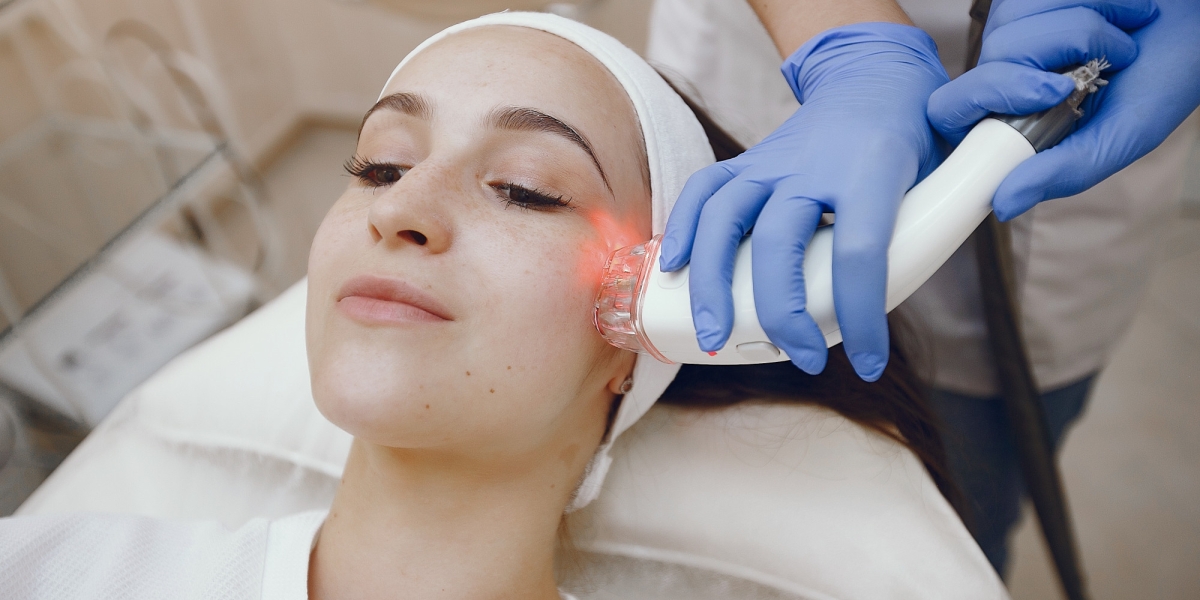Laser toning is a non-invasive cosmetic treatment designed to improve skin tone, texture, and overall appearance by using targeted laser technology. This procedure is commonly used to address pigmentation issues, uneven skin tone, and other skin concerns. By stimulating the skin’s natural repair processes, laser toning helps achieve a more radiant and uniform complexion. This guide provides an overview of laser toning, including how it works, its benefits, the procedure, and what to expect before, during, and after treatment.
What is Laser Toning?
-
Description:
- Laser toning involves the use of laser light to target specific layers of the skin, addressing issues such as hyperpigmentation, redness, and uneven skin tone. The laser energy stimulates collagen production and promotes skin regeneration, resulting in a smoother and more even complexion.
-
Types of Concerns Treated:
- Pigmentation Issues: Such as age spots, sun spots, and melasma.
- Uneven Skin Tone: Reduces redness, discoloration, and blotchiness.
- Skin Texture: Improves texture by stimulating collagen production.
How Laser Toning Works
-
Laser Technology:
- Q-Switched Lasers: Commonly used for laser toning, Q-switched lasers emit high-energy light pulses that target pigment in the skin without damaging the surrounding tissue.
- Fractional Lasers: Create microscopic injuries in the skin to stimulate collagen production and improve skin texture and tone.
-
Mechanism:
- Targeting Pigmentation: The laser light is absorbed by pigment cells (melanin) or blood vessels, breaking them down and reducing discoloration.
- Collagen Stimulation: The laser energy penetrates the skin and stimulates the production of collagen, a protein essential for skin elasticity and smoothness.
The Laser Toning Procedure
-
Consultation:
- Assessment: A consultation with a qualified dermatologist or laser specialist is essential to evaluate your skin type, concerns, and overall suitability for laser toning.
- Treatment Plan: A personalized treatment plan is developed based on your specific needs and goals.
-
Preparation:
- Pre-Treatment Care: Follow pre-treatment instructions, which may include avoiding sun exposure, discontinuing certain skincare products, and discussing any medications or medical conditions with your practitioner.
-
Procedure:
- Preparation: The skin is cleansed, and a cooling gel may be applied to enhance comfort and protect the skin.
- Laser Application: The laser is applied to the treatment area in a series of pulses or passes. The procedure is generally well-tolerated and can be adjusted for comfort.
- Duration: Treatment duration varies depending on the size of the area being treated. Smaller areas may take just a few minutes, while larger areas may require more time.
-
Post-Procedure Care:
- Aftercare Instructions: Follow aftercare instructions provided by your practitioner, which may include using soothing lotions, avoiding sun exposure, and applying sunscreen.
- Recovery: Mild redness, swelling, or sensitivity may occur but typically resolves within a few days.
Benefits of Laser Toning
-
Improved Skin Tone:
- Even Complexion: Reduces pigmentation issues, redness, and uneven skin tone, resulting in a more uniform complexion.
-
Non-Invasive:
- Minimal Downtime: Laser toning is a non-invasive procedure with minimal downtime, allowing you to return to daily activities quickly.
-
Collagen Stimulation:
- Youthful Skin: Stimulates collagen production, which helps to improve skin texture, firmness, and overall appearance.
-
Customizable Treatment:
- Personalized Approach: The treatment can be tailored to address specific skin concerns and goals, ensuring optimal results.
Risks and Considerations
-
Possible Side Effects:
- Redness and Swelling: Mild redness and swelling are common but usually subside within a few days.
- Pigmentation Changes: Temporary changes in skin pigmentation may occur, especially in individuals with darker skin tones.
- Discomfort: Some discomfort or a sensation similar to a mild sunburn may be experienced during and after the procedure.
-
Consultation:
- Choosing a Provider: Select a qualified dermatologist or laser specialist with experience in laser toning to ensure the best results and minimize risks.
-
Multiple Sessions Required:
- Treatment Plan: Several sessions may be needed to achieve optimal results, as improvements in skin tone and texture develop gradually.
-
Post-Treatment Care:
- Sun Protection: Consistent use of sunscreen and protective measures is essential to maintain results and prevent further pigmentation issues.
What to Expect After Treatment
-
Immediate Aftercare:
- Post-Treatment Care: Follow the aftercare instructions provided by your practitioner, including applying any recommended products and avoiding activities that may irritate the skin.
-
Long-Term Care:
- Sun Protection: Use sunscreen diligently to protect the treated skin and prevent pigmentation changes.
- Follow-Up Appointments: Attend follow-up appointments as recommended to assess progress and determine if additional sessions are needed.
-
Results:
- Onset: Initial improvements may be visible within a few weeks, with continued enhancement over time as the skin heals and collagen production increases.
- Longevity: Results are generally long-lasting, with continued improvement in skin tone and texture following the treatment.
Conclusion
Laser toning offers a non-invasive and effective solution for addressing pigmentation issues, uneven skin tone, and improving overall skin texture. By understanding the procedure, benefits, risks, and what to expect during recovery, you can make informed decisions about whether laser toning is right for you. Consulting with a qualified specialist will ensure personalized care and optimal results, helping you achieve a more radiant and even complexion.
